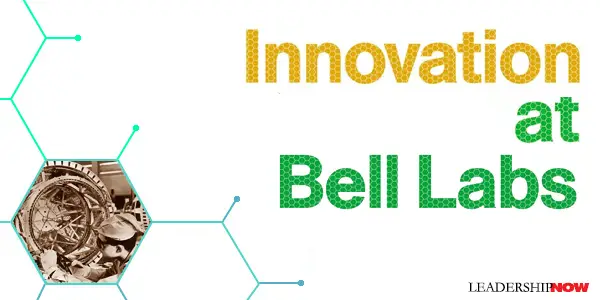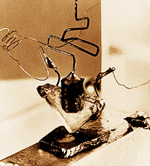 |
 |
06.28.12

Innovation at Bell Labs
BILL GATES once remarked, “My first stop on any time-travel expedition would be Bell Labs in December 1947,” That was the year Bell Labs invented the transistor—a tiny invention that makes possible the technology we have today. Finding an aspect of modern life that doesn’t incorporate some strand of Bell Labs’ DNA would be difficult. Cellular communications, the laser, digitized and synthesized music, the solar battery cell, the first orbiting communications satellite, and the UNIX operating system, are all products of Bell Labs. AT&T officially created Bell Telephone Laboratories on January 1, 1925. At its peak in the late 1960s’, Bell Labs employed about twelve-hundred PhDs and produced 13 Nobel Prize winners.
 John Pierce is one of the brilliant and interesting people we are introduced to in Gertner’s story. It was Pierce that suggested calling the new device of 1947 a transistor. Peirce was what Gertner calls an instigator. “An instigator is different from a genius, but just as uncommon. An instigator is different, too, from the most skillful manager, some able to wrest excellence out of people who might otherwise fall short.” Pierces real talent was “in getting people interested in something that hadn’t really occurred to them before.” Humans all suffer from a terrible habit of shoving new ideas into old paradigms. “Everyone faces the future with their eyes firmly on the past and they don’t see what’s going to happen next,” observed John Pierce. For creativity to flourish, it needs both freedom and structure. When pierce first came to Bell Labs “he was given free rein to pursue any ideas he might have. He considered the experience equivalent to being cast adrift without a compass. ‘Too much freedom is horrible,’ he would say in describing his first few months at the Labs. Indeed he eventually came to believe that freedom in research was similar to food; it was necessary, but moderation was usually preferable to excess.” Gertner writes, “We usually imagine that invention occurs in a flash, with a eureka moment that leads a lone inventor toward a startling epiphany. In truth, large leaps forward in technology rarely have a precise point of origin. At the start, forces that precede an invention merely begin to align, often imperceptibly, as a group of people and ideas converge, until over the course of months or years (or decades) they gain clarity and momentum and the help of additional ideas and actors. Luck seems to matter, and so does timing, for it tends to be the case that the right answers, the right people, the right place—perhaps all three—require a serendipitous encounter with the right problem. And then—sometimes—a lead. Only in retrospect do such leaps look obvious. When Niels Bohr—along with Einstein, the world’s greatest physicist—heard in 1938 that splitting a uranium atom could yield a tremendous burst of energy, he slapped his head and said, ‘Oh, what idiots we have all been.’” Today there is nothing quite like the Bell Labs of AT&T and Western Electric to produce the creative technology that they did. Bell Labs laser scientist Herwig Kogelnik describes the magic of Bell Labs well: “It’s the interaction between fundamental science and applied science, and the interface between many disciplines, that creates new ideas.” 

Posted by Michael McKinney at 04:54 PM
|
BUILD YOUR KNOWLEDGE
 

How to Do Your Start-Up Right STRAIGHT TALK FOR START-UPS 
Grow Your Leadership Skills NEW AND UPCOMING LEADERSHIP BOOKS 
Leadership Minute BITE-SIZE CONCEPTS YOU CAN CHEW ON 
Classic Leadership Books BOOKS TO READ BEFORE YOU LEAD |